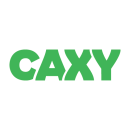Chicago is built on great project management — literally.
Engineers managed to reverse the flow of the Chicago River, and in doing so, marked the city for an important milestone in civil engineering in history.
The Chicago River sits in a unique geological position. After the last ice age, the river sat on a tipping point between the Great Lakes and Mississippi River watersheds, meaning water flowed into both, depending on the weather. As time went on, the divide lowered and became a series of rivers and wetlands. When the city became more populated throughout the nineteenth century, disease — and even minnows, affectionately referred to as “chowder” by residents — flowed through the pipes and into homes.
In 1900, a group of engineers completed a canal project that would reverse the flow of the Chicago River. By the 1980s — while the river was much safer and Lake Michigan protected from sewage dumping into Chicago’s drinking water — the river started to become bogged down with trash. Researchers at the University of Chicago found that the bottom of the river’s current was flowing in the opposite direction of the top. Again, the flow of the river was adjusted using civil engineering.
While civil engineers rightfully receive much of the credit for these accomplishments, the credit also goes to the project managers who made each one happen.
In the spirit of great project management and using creative tools to solve complex problems, Built In Chicago spoke with two tech leaders to learn how their teams collaborate, share ideas and develop strategies to take on big projects.
Tms is a marketing and technology company that offers a suite of products and consulting services.
What tools do you use to minimize chaos in your day-to-day work?
Minimizing chaos and maintaining efficiency often comes down to using tools strategically and intentionally. At tms, working across several diverse clients means managing a variety of web and app-based projects. While each project is unique, certain tools consistently add value regardless of the end product. Most notably, Smartsheet, a versatile work management tool, has become my go-to starting point for planning any new initiative.
Smartsheet allows me to outline every step required to successfully launch a project while estimating the overall timeline. Using Smartsheet early in the process creates a centralized, dynamic reference point for all stakeholders. It bridges communication gaps and provides a clear, visual representation of the overarching strategy, roadmap and key action items.
Other programs in my toolkit include Microsoft Planner Board, ProductPlan’s road mapping tool, and Trello, all of which complement my efforts to reduce chaos and improve day-to-day operations.
How has your toolkit allowed you to level up at tms? What important tasks are you able to accomplish by automating some of the more tedious processes?
As a continuously evolving and growing professional, my “toolkit” is a blend of methodologies, frameworks, skills and tools that have been essential to deepening my impact at tms. It’s important to note that this isn’t just a static collection of resources; it’s a dynamic, ever-evolving set of practices that I adapt and enhance by leading projects in a fast-paced, creative environment.
A key component of my toolkit is integrating external programs into my daily workflow to automate tedious tasks and free up time for meaningful, strategic work. Tools like Smartsheet allow me to automate repetitive tasks, such as continuous timeline changes and real-time status updates. This means my team can spend less time chasing down details and more time focusing on delivering high-quality, innovative solutions for clients.
My toolkit also includes methodologies like Agile, which brings structure and clarity to complex projects. Ultimately, my toolkit isn’t just about the tools I use or the processes I implement — it’s about fostering a mindset of continuous improvement to adapt, refine and empower my team to deliver consistent value to our clients.
What is one tip you would share with a new product manager who is trying to minimize chaos on their team?
One tip I would share with a new product manager trying to minimize chaos is to prioritize clear communication and alignment from the start. Chaos often stems from misaligned expectations, unclear goals or breakdowns in communication. To combat this, start every project with a well-defined plan: outline objectives, establish priorities and clarify team roles.
Use frameworks like “responsible, accountable, consulted and informed” to ensure everyone is aware of their role and responsibilities. Create a cadence of brief, structured meetings to track process progress and potential blockers. Incorporating the use of project management tools can help provide a single source of truth and a place where the team can easily see timelines, task owners and project status. Transparency reduces confusion and empowers the team to focus on the execution.
Most importantly, be sure to lead with empathy and adaptability. Projects often involve rapid changes, and it is your job to create a stable environment where your team feels supported. When chaos occurs, focus on collaborative problem-solving while ensuring that everyone remains aligned with the overall goals.
Caxy helps companies create a technology strategy and custom software that supports and drives the business strategy.
What tools do you use to minimize chaos in your day-to-day work?
Jira is my source of truth. Tickets are where I go to keep an organized record of conversations and decisions. My team knows where to find final decisions and is empowered to move forward on work. Linked tickets and labels also help guide related work. A well planned out sprint is our key to super charged efficiency.
How has your toolkit allowed you to level up at Caxy? What important tasks are you able to accomplish by automating some of the more tedious processes?
Each week, our leadership team shares the three biggest and most important deliverables. This helps my team know where my focus will be. When communication is clear and we all know the next steps, the team is empowered to do their best work. I get to stay one step ahead of the team guiding strategic initiatives and future planning. This is only possible when the right people have what they need.
What is one tip you would share with a new product manager who is trying to minimize chaos on their team?
Be transparent with your teams. Becoming a silo of information might make you feel valuable but it can create ambiguity and conflict. Open communication reduces unneeded stress on your teams. Share what you know and where you need help to drive the whole team forward.









